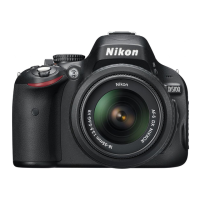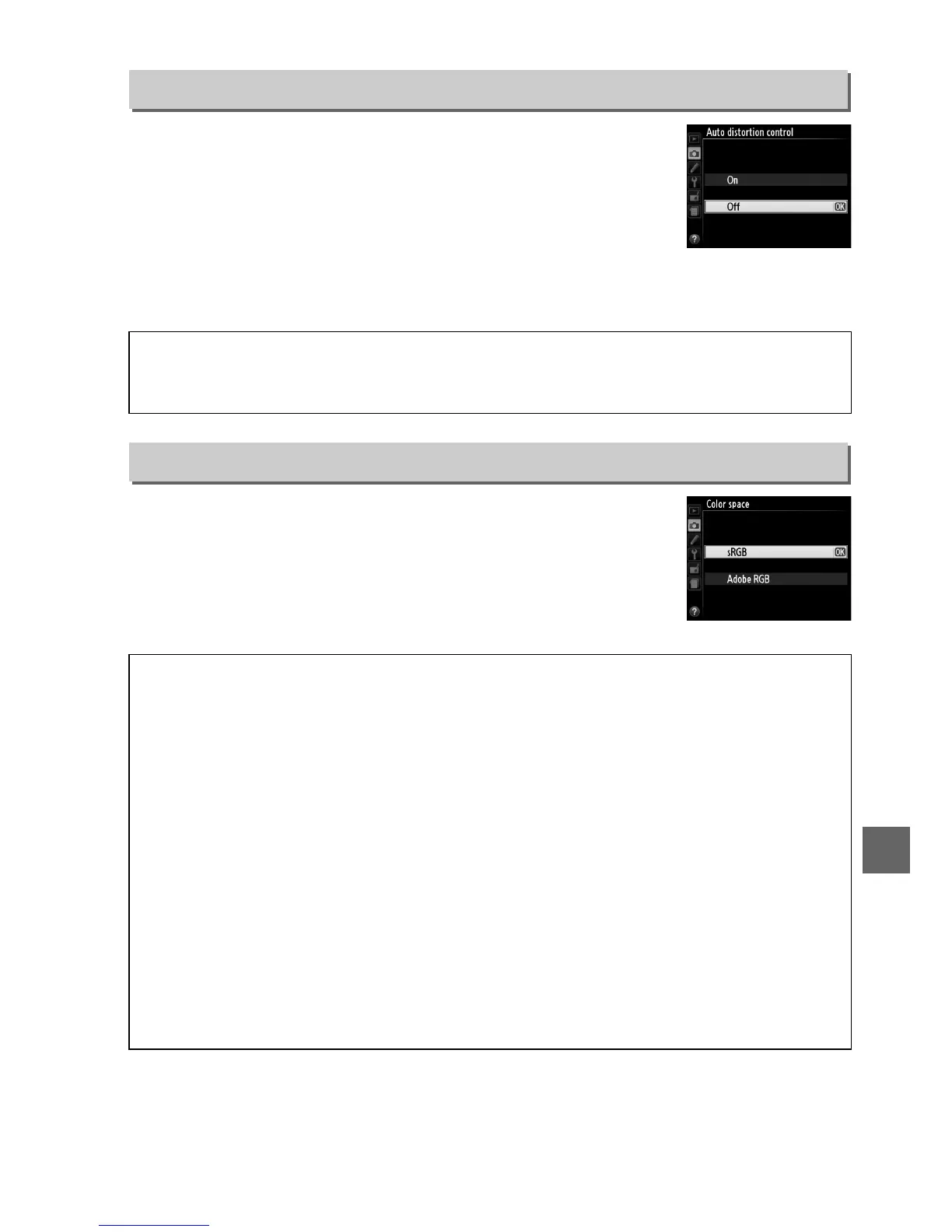153
i
Select On to reduce barrel distortion when shooting with wide-
angle lenses and to reduce pin-cushion distortion when
shooting with long lenses (note that the edges of the area
visible in the viewfinder may be cropped out of the final
photograph, and that the time needed to process photographs
before recording begins may increase).
This option is available
only with type G and D lenses (PC, fisheye, and certain other
lenses excluded); results are not guaranteed with other lenses.
The color space determines the gamut of colors available for
color reproduction.
Choose sRGB for photographs that will be
printed or used “as is,” with no further modification.
Adobe RGB
has a wider color gamut and is recommended for images that
will be extensively processed or retouched after leaving the
camera.
Auto Distortion Control
G button ➜ C shooting menu
A Retouch: Distortion Control
For information creating copies of existing photographs with reduced barrel and pin-
cushion distortion, see page 185.
Color Space
G button ➜ C shooting menu
A Color Space
Color spaces define the correspondence between colors and the numeric values that
represent them in a digital image file.
The sRGB color space is widely used, while the Adobe
RGB color space is typically used in publishing and commercial printing.
sRGB is
recommended when taking photographs that will be printed without modification or
viewed in applications that do not support color management, or when taking photographs
that will be printed with ExifPrint, the direct printing option on some household printers, or
kiosk printing or other commercial print services.
Adobe RGB photographs can also be
printed using these options, but colors will not be as vivid.
JPEG photographs taken in the Adobe RGB color space are DCF compliant; applications and
printers that support DCF will select the correct color space automatically.
If the application
or device does not support DCF, select the appropriate color space manually.
For more
information, see the documentation provided with the application or device.
A Nikon Software
ViewNX 2 (supplied) and Capture NX 2 (available separately) automatically select the correct
color space when opening photographs created with this camera.

